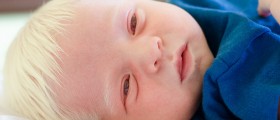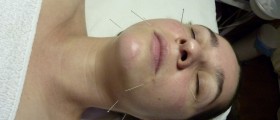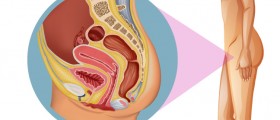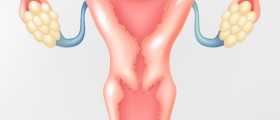Information on Endometriosis
Endometriosis is a medical condition in women in which endometrial cells grow outside their natural place - the uterus. Endometrial cells are the ones that form the membrane of the uterus and are ejected each month through menstruation. Endometriosis means that these cells are located outside the uterus, possibly on the ovaries, outer layer of the uterus, in the Fallopian tubes, and less commonly in the vagina and the cervix.
Causes
The exact cause of endometriosis is not known. One possibility is that the immune system of the woman due to the malfunctions cannot recognize these cells outside the uterus. Normally, the immune system responds to the growth of these cells in other locations and destroys them.
Other possibility includes retrograde menstruation in which the menstrual blood flows through fallopian tubes into the abdomen and thus places the endometrial cells in unusual locations. The bloodstream or lymph system can move endometrial cells to places, even outside reproductive organs.

The women with heavy bleeding are likely to have this problem. Some inborn abnormalities in the female reproductive organs may also be contributory to the problem. The very likely explanation for the endometriosis is the surgery. Some surgery interventions, like episiotomy or cesarean delivery, may be liable for the endometriosis. One theory states that pelvic cells may transform and develop into endometrial cells. Endometriosis may be the part of genetic inheritance.
Symptoms
Even though mostly asymptomatic, pains and infertility are the worst signs of endometriosis. The treatment thus revolves around soothing the pains and solving the problem of infertility. For pains, doctors use hormone pills to reduce the level of estrogen, and thus the number of endometrial cells and lessen the pains.
The hormone pills or patches also prevent further growth of endometrial cells outside the uterus. For pain and heavy bleeding, women can take anti-inflammatory drugs to lessen the inflammation, pains, and bleeding. In case of worse symptoms and if the above-mentioned therapy does not help, some stronger treatments can be considered, one involving progestin, a progestin intrauterine device, a gonadotropin-releasing hormone agonist, and others. Laparoscopy may be needed if the cells are in the pelvic region, and sometimes even the ovaries or the uterus have to be removed if a woman does not plan any children.
For infertility more serious and demanding approach should be taken. The woman who wants a baby goes through infertility treatment determined by her age, severity of the endometriosis, health, and medical history. If the endometriosis is not that severe, the endometrial tissue is surgically removed.
To improve the chance of pregnancy, women are given medicine that boosts ovulation and is advised to have sexual intercourse during the fertile days. Insemination and in vitro fertilization are common infertility treatments too.
- Studies showed 10%–15% of childbearing-age women have been affected by pelvic endometriosis and 30%–50% of the patients are affected by the symptoms of chronic pelvic pain and/or infertility. The incidence of endometriosis has increased in recent years and the treatment for the disease costs $70 billion per year in the United States alone.
- Different theories have emerged to explain the pathological mechanism of endometriosis. The most widely accepted hypothesis is the menstrual retrograde theory. According to this hypothesis, the menstrual blood transports viable endometrial fragments through the fallopian tube to the peritoneal cavity, where those fragments can be implanted, developed, and in certain specific cases, invade other pelvic tissues during menstruation.
- To date, Resveratrol, Bay1316957, and bardoxifene were effective against lesions and pain in controlled animal studies. In clinical trials, Quinagolide showed no statistical difference with the placebo group; the results of phase II clinical trial of the IL-33 antibody have not been announced yet; clinical trial stage III of vilaprisan was suspended due to drug toxicity.
- Elagolix was approved for the treatment of endometriosis-related pain, but clinical studies of Elagolix for the pretreatment of patients with endometriosis to before In vitro fertilization treatment have not been fulfilled.
- The results of a clinical study of Linzagolix in patients with moderate to severe endometriosis-related pain have not been disclosed yet. Letrozole improved the fertility of patients with mild endometriosis. For endometriosis patients with infertility, oral GnRH antagonists and aromatase inhibitors are promising drugs, especially Elagolix and Letrozole.
- www.nhs.uk/conditions/endometriosis/treatment/
- www.womenshealth.gov/a-z-topics/endometriosis
- Photo courtesy of Hic et nunc by Wikimedia Commons: commons.wikimedia.org/wiki/File:Endometriosis1.jpg

















Your thoughts on this
Loading...